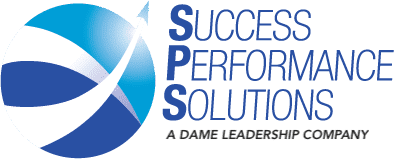Yes, you read that right. People are not a company’s most important asset!
Despite the popularity of the over-played and over-used corporate euphemism “people are our most important asset,” it’s a lie. It’s not the body count that is an asset.
 The real asset is the results produced by the people working. It is the fruit of employee labor that adds value, differentiates one company from another, and achieves a competitive edge. People collecting a paycheck just add expense and subtract from the bottom line. People getting results add value to the organization and a market edge that is difficult for competitors to copy.
The real asset is the results produced by the people working. It is the fruit of employee labor that adds value, differentiates one company from another, and achieves a competitive edge. People collecting a paycheck just add expense and subtract from the bottom line. People getting results add value to the organization and a market edge that is difficult for competitors to copy.
If the contributions of employees ultimately create a definitive company asset, then optimizing productivity is paramount.
Optimizing productivity begins with placing employees with the right skills and abilities in the right jobs on the right teams at the right time. Interviews, personality tests, and reference checks can help managers sort out high potentials from chronic under-performers. But these hiring techniques generally stop short.
They are very good at identifying the effectiveness of candidates if hired but are blind to one critical factor – efficiency. When getting the biggest bang for the buck from your resources – both physical assets and human, an effective but inefficient employee most likely wastes time, money, and/or resources. They do get results but they often take 2 steps back for every 3 steps forward. The inefficiency slows production, leads to lost opportunity, and causes mistakes – none of which adds any value. Optimizing productivity therefore requires a valid assessment of both employee effectiveness and efficiency.
One method to assess effectiveness and efficiency is based on the following formula:
Mindset + Drivers + Skill = Power
…where Mindset = your current emotional and motivational state; Drivers = the emotions driving motivation that predict productive and counter-productive behaviors/habits, and Skill = the motivational skills necessary to achieve your goals or develop a personal plan to improve or acquire them.
One way to measure an employee’s Power score is through the Quality of Motivation Questionnaire. A hiring manager can assess a candidate’s effectiveness and efficiency. Even if the Power score doesn’t lead to a hire or not hire decision, it provides an extraordinary opportunity to guide, coach, and mentor the new employee toward a pathway of success and avoid career de-railers and counter-productive behaviors that cut careers short.
Likewise, succession planning without understanding and dealing with personal efficiency is like heading out on a long distance trip without a gas gauge. Unless your vehicle possesses a self-filling tank, it is critical to know how many miles per gallon you can travel, not just how many gallons it takes to fill your tank. The future leader who has been effective but inefficient will eventually run out of gas…and an empty tank never happens at a convenient time.
Focusing on effective and efficient performance is what productivity is all about. By optimizing productivity, a company will create The Optimized Organization. The Optimized Organization beats the competition for high performing employees and market share by placing their employees in the right place, on the right teams, in the right way, and at the right time.
